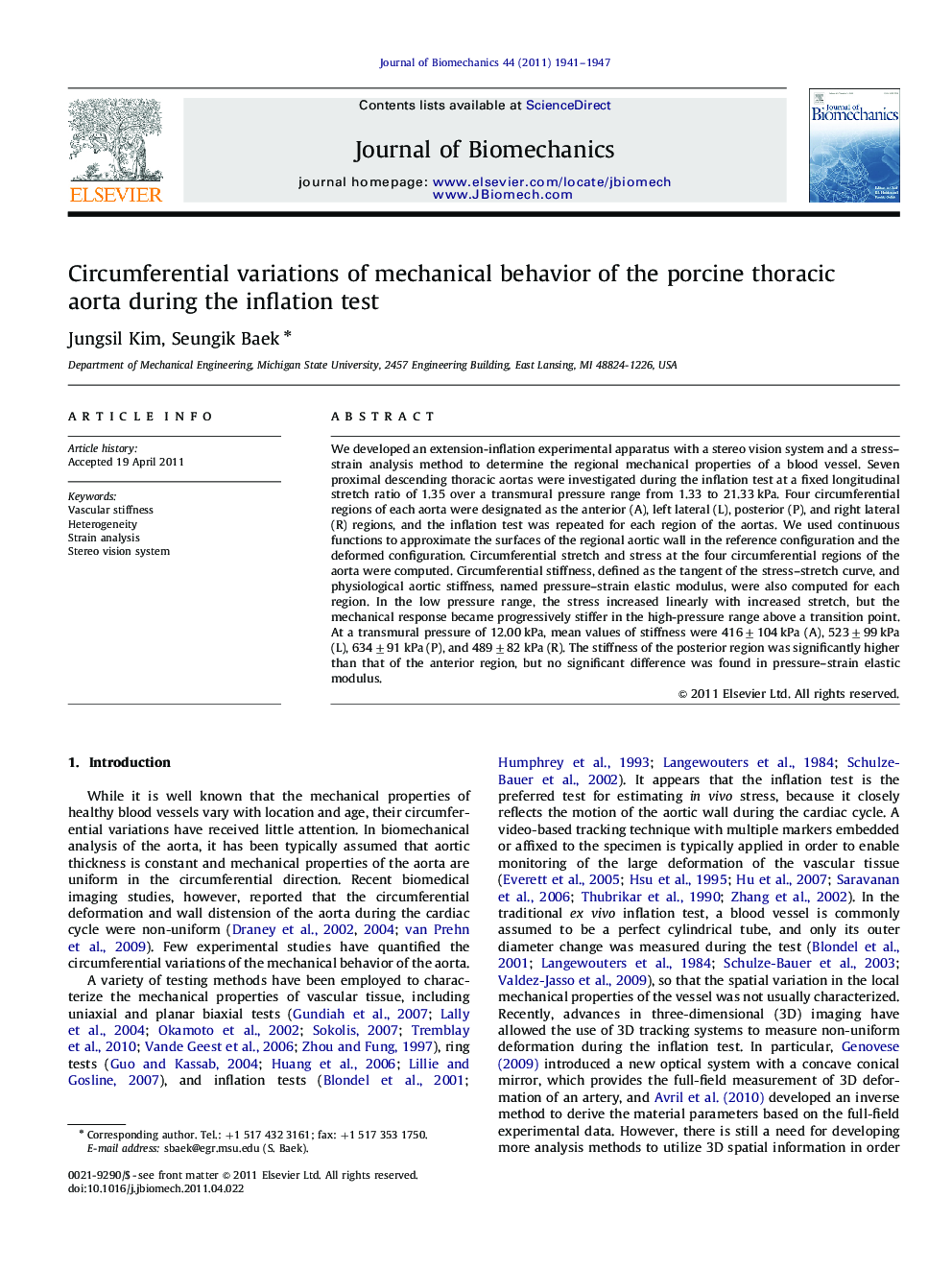| Article ID | Journal | Published Year | Pages | File Type |
|---|---|---|---|---|
| 872884 | Journal of Biomechanics | 2011 | 7 Pages |
We developed an extension-inflation experimental apparatus with a stereo vision system and a stress–strain analysis method to determine the regional mechanical properties of a blood vessel. Seven proximal descending thoracic aortas were investigated during the inflation test at a fixed longitudinal stretch ratio of 1.35 over a transmural pressure range from 1.33 to 21.33 kPa. Four circumferential regions of each aorta were designated as the anterior (A), left lateral (L), posterior (P), and right lateral (R) regions, and the inflation test was repeated for each region of the aortas. We used continuous functions to approximate the surfaces of the regional aortic wall in the reference configuration and the deformed configuration. Circumferential stretch and stress at the four circumferential regions of the aorta were computed. Circumferential stiffness, defined as the tangent of the stress–stretch curve, and physiological aortic stiffness, named pressure–strain elastic modulus, were also computed for each region. In the low pressure range, the stress increased linearly with increased stretch, but the mechanical response became progressively stiffer in the high-pressure range above a transition point. At a transmural pressure of 12.00 kPa, mean values of stiffness were 416±104 kPa (A), 523±99 kPa (L), 634±91 kPa (P), and 489±82 kPa (R). The stiffness of the posterior region was significantly higher than that of the anterior region, but no significant difference was found in pressure–strain elastic modulus.
